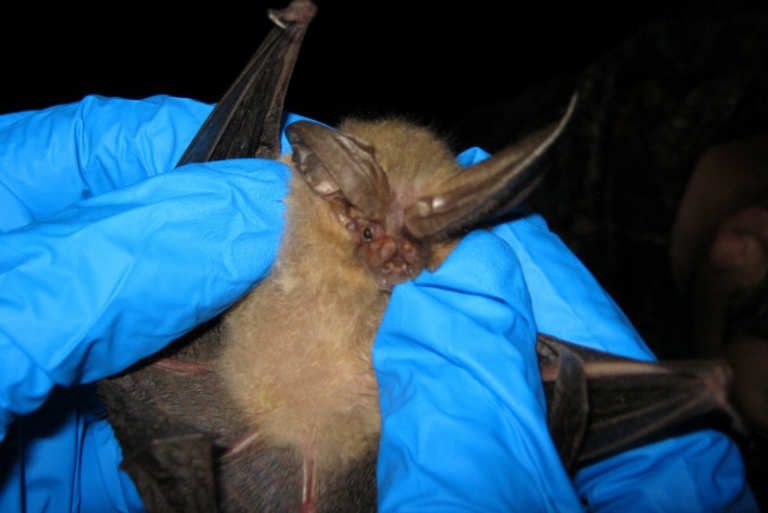
Densely wooded, West Virginia may be home to more than its share of bats—wheeling in the twilight as they feed on flying insects. But what have bats to do with the coronavirus outbreak?
Most scientists agree the COVID-19 virus was first transmitted from a bat to a human, possibly after a human ate a bat infected with the virus or was exposed to feces or urine from an infected bat in a market in Wuhan, China.
However, that's no reason to worry about West Virginia bats, says Sheldon Owen, a wildlife specialist with West Virginia University.
“Here in West Virginia, bats are known to carry rabies, although it is only in a small portion of the bat population—less than one percent," Owen said.
Yet, bats do transmit many zoonotic diseases—that is, a disease that can be transmitted from non-humans to humans—and they do so efficiently.
"Their biology makes them perfect vessels to carry various diseases,” Owen said. "They have a global distribution, and are highly mobile since they have the ability to fly."
There are more than 1,300 different species of bats on the planet, he said, and they make up an impressive twenty-some percent of all mammalian species.
But bats shouldn't be singled out fearfully as the culprits in the spread of disease. Many animals spread disease, and transmissions naturally occur.
“Both wild and domestic animals carry many types of diseases. In most cases, these diseases are specific and restricted to their wild or domestic hosts. However, diseases periodically spill over from animals to humans."
Transmission can occur when wild animals are harvested for food and during the husbandry of domestic animals. The encroachment of habitation into wildlife habitat can also increase the chances of exposure.
Fairs, petting zoos, and wild animal markets, which are now mostly illegal in the U.S., are also transmission sources, he said.
"Diseases can circulate in animal populations for years with little to no sickness," Owen said, "then one day under the right conditions, the disease is transmitted from animals to humans.”
Unfortunately, zoonotic outbreaks are common. The Ebola outbreak of 2014, the Swine Flu outbreak in 2009, SARS in 2003, and the HIV epidemic are all examples of zoonotic diseases.
"In West Virginia, we have other zoonotic diseases that you may be more familiar with, such as Lyme disease or rabies,” he said.
Despite their transmission potential, bats provide ecological services around the world, such as insect control, pollination, and seed dispersal.
"All twelve species of bat found in West Virginia feed on insects," Owen advised. "They are voracious eaters, consuming 50 to 75 percent of their body weight in insects each night.
"Many species of agricultural pests have been found in the diets of bats including June beetles, click beetles, leafhoppers, planthoppers, spotted cucumber beetles, green stinkbugs, and corn earworm moths.
Published estimates of the value of pest suppression from bats averages about $74 per acre, he said, "therefore, the value of bats to the U.S. agricultural industry is about $22.9 billion per year.”
As far as it goes with bats, Owen says it's enough to simply limit close contact with them.
“Yes, bats can carry zoonotic diseases that can infect humans, but their benefits far outweigh their dangers. Remember that infection is preventable: Don’t handle bats. If you must pick one up, use gloves or a shovel. Just know that we are far better off learning to coexist with bats."
Sign up to receive a FREE copy of West Virginia Explorer Magazine in your email twice weekly. Sign me up!





























Facebook Comments